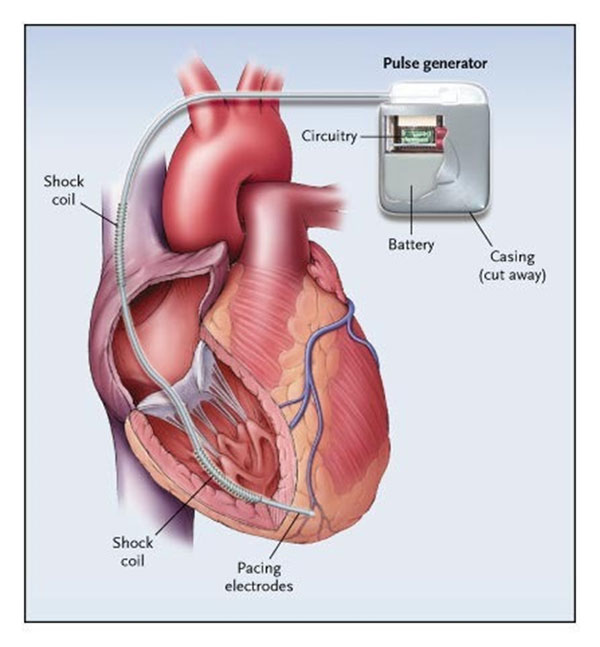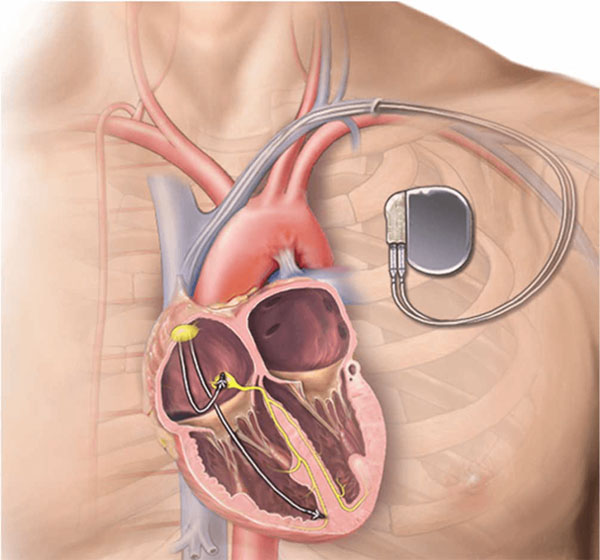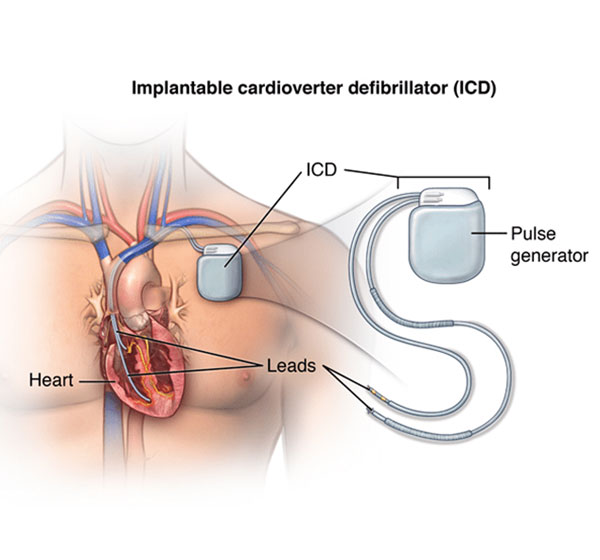Pacemaker and ICD Implants/Battery Change
Pacemaker For Arrhythmias
The most common reason people get a pacemaker is their heart beats too slowly (called bradycardia), or it pauses, causing fainting spells or other symptoms. In some cases, the pacemaker may also be used to prevent or treat a heartbeat that is too fast (tachycardia) or irregular.
The surgeon will make a 5 to 6cm (about 2 inch) cut just below your collarbone, usually on the left side of the chest, and insert the wires of the pacemaker (pacing leads) into a vein. The pacing leads are guided along the vein into the correct chamber of your heart using X-ray.
Types of Pacemakers
Single-chamber pacemaker
This type of pacemaker has one lead that connects the pulse generator to one chamber of your heart. For most people, we use the single-chamber pacemaker to control heartbeat pacing by connecting the lead to your right ventricle (lower heart chamber).

Dual chamber pacemaker
Dual chamber pacemakers stimulate both the right atrium and the right ventricle. The implantation procedure is typically performed under local anesthesia and requires only a brief hospitalization.

ICD
You might need an ICD if you have a dangerously fast heartbeat that keeps your heart from supplying enough blood to the rest of your body (such as ventricular tachycardia or ventricular fibrillation) or if you are at high risk of such a heart rhythm problem (arrhythmia), usually because of a weak heart muscle.
